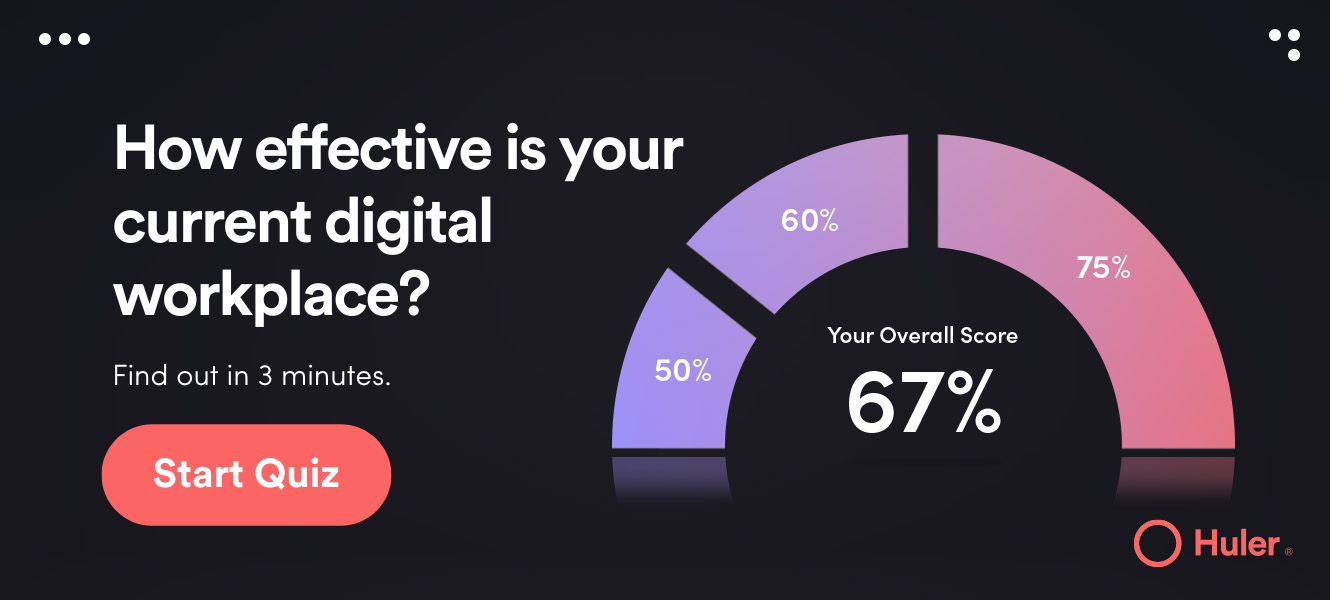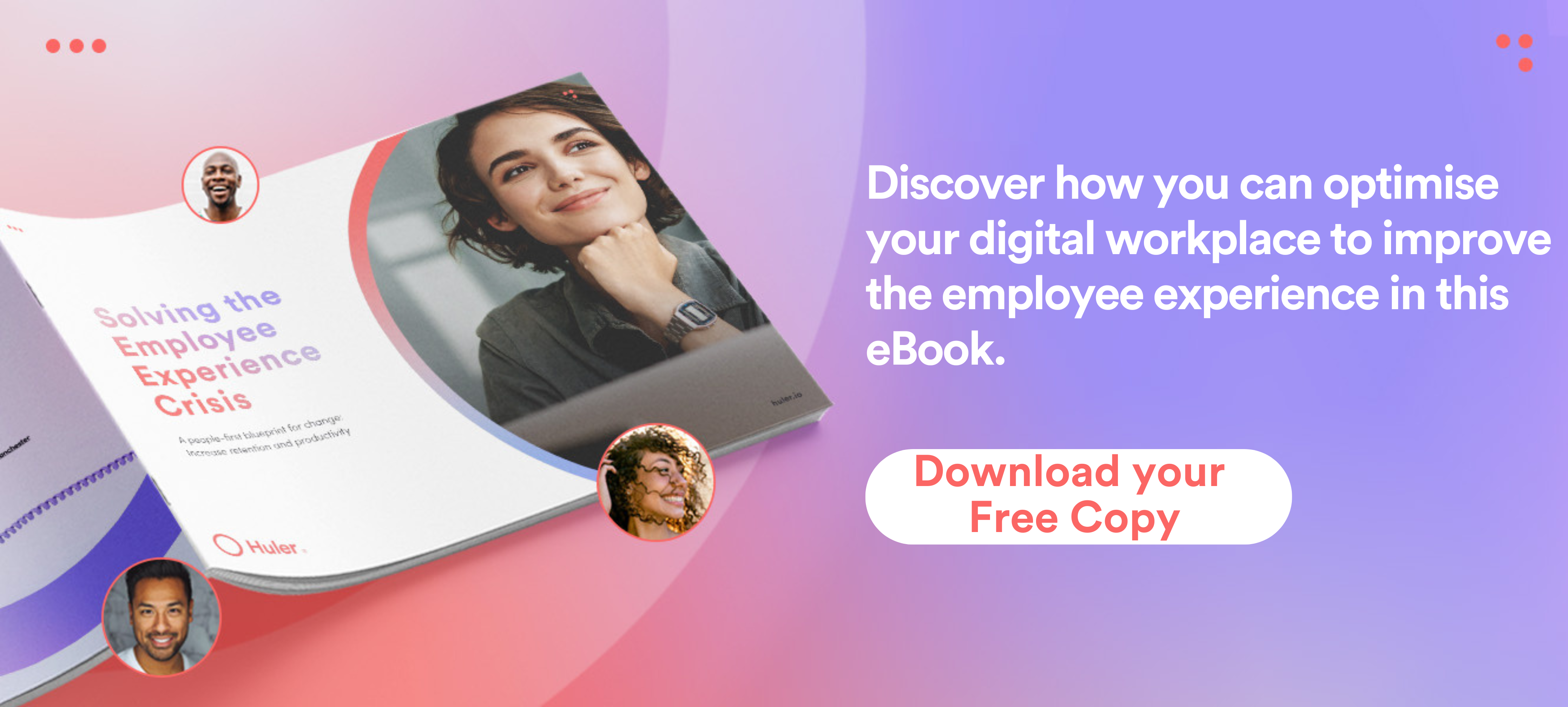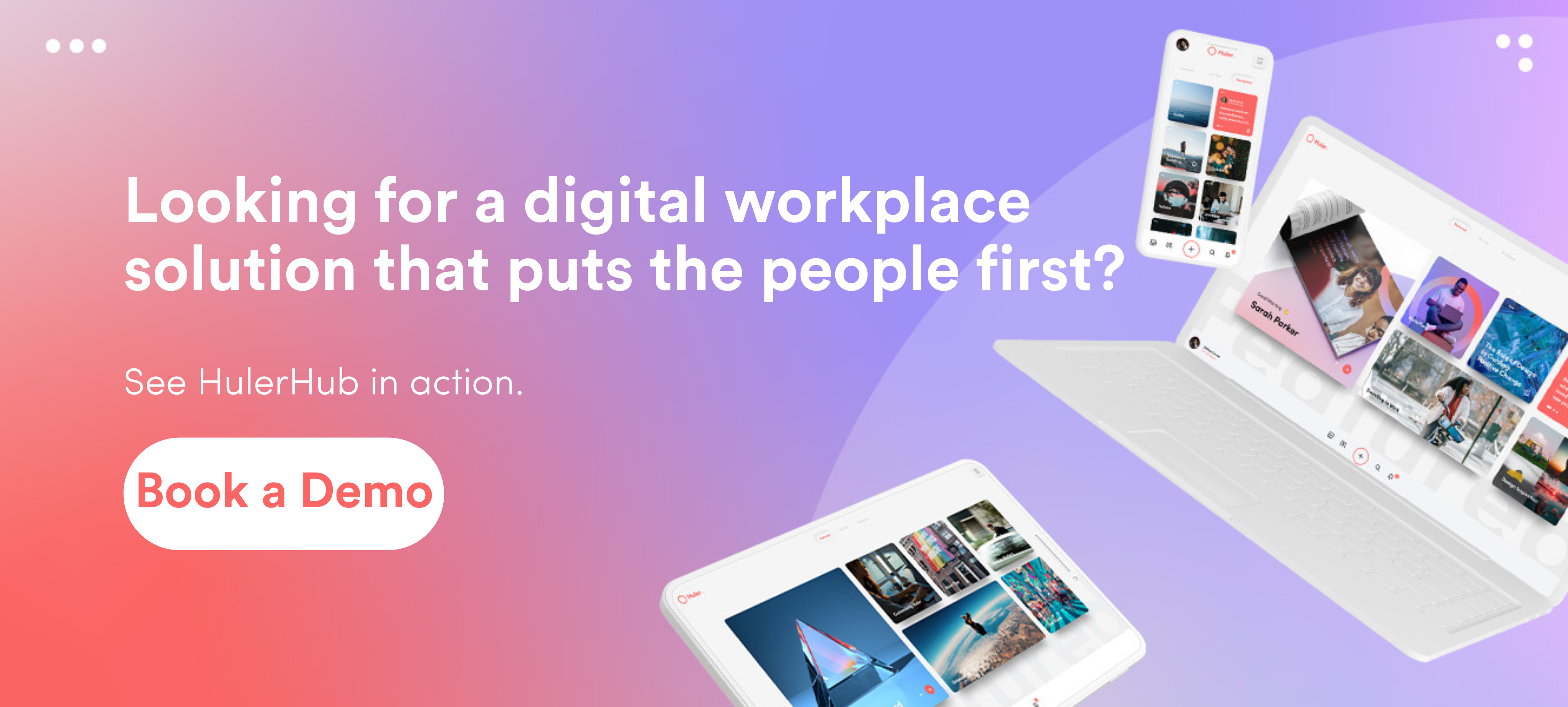As more and more businesses switch to flexible working, digital employee experience is becoming increasingly important. But what does the term digital employee experience actually mean and why is it so significant?
In this article, we’ll explore what digital employee experience is, why it’s important, and the benefits and challenges of creating a good one. We’ll also look at how teams across your organisation can better shape the digital employee experience to boost productivity, engagement and culture.
Let’s get to it!
What Is Digital Employee Experience?
Digital employee experience (DEX) is the experience an employee gets from the technology they use at work, and how that contributes to their overall employee experience.
It’s about how effectively employees interact with technology and digital workplace tools, and how well these interactions support employee engagement, productivity, collaboration, and communication.
DEX falls under the category of employee experience, which refers to everything employees see, hear, interact with, and observe during their tenure in an organisation. Each touchpoint of the employee journey offers a unique experience, ranging from recruitment, preboarding, and onboarding to growth and offboarding. The majority of these touchpoints can be found in both a physical and digital workplace within your organisation.
So as digital workplaces become the norm, if you’re looking to shape a positive employee experience, you need to consider physical and digital employee interactions.
Suggested reading: Want to find out more about digital workplaces? Read our blog: ‘What is a Digital Workplace?’

Why is Digital Employee Experience important?
With remote, flexible and hybrid schemes becoming essential in job descriptions, technology is inseparable from work. Everybody uses technology, whether it’s a communication app to send someone a message, using tools within the digital workplace, or just sending a quick email. And if technology works well, employees work well. It all means that, today, digital employee experience is employee experience.
It’s importance becomes clear as more and more companies begin hiring Chief Remote Officers, as 80% of workers who worked remotely over 2020 to 2021 plan to continue working from home.1
When it comes to technology, we all have high expectations. All the way from social media to shopping, technologies allow us to enjoy seamless digital experiences that make our lives easier. We’ve come to expect the same of workplace technology, too. When we’re unable to access information or complete a simple task using the technology we have at our fingertips, it’s frustrating. It might even affect how we feel about our work, colleagues, or our organisation.
Benefits of investing in Digital Employee Experience
Flexibility
The desire for truly flexible work is growing. And most workers don’t just want location flexibility, they want schedule flexibility too (and not just some of them, but 95% of them!)2.
There is no doubt that technology is one of the key enablers of flexible working that extends beyond where we work. But only if it offers a good digital employee experience.
Flexible working environments of all shapes and sizes require a consistent, on-brand, personalised DEX, especially when the majority of work takes place online.
The right digital workplace tools partnered with a positive digital employee experience make your employees’ lives easier. With it, they work from anywhere, at any time. They communicate effectively with colleagues both synchronously and asynchronously. They share and access information seamlessly. Even if they never visit the office, they feel part of your workplace culture.
Retain and attract employees
Finding and retaining top talent is a struggle in today’s environment. There are many parts to an inclusive recruitment and retention strategy, but DEX should be a priority.
An employee’s digital experience with your organisation starts when they apply for a job and continues throughout their tenure. An employee’s first touch with your organisation will be digital, for example by browsing job boards or looking at your website’s careers page.
The digital employee experience sets the tone for your new hires throughout these touchpoints. People will feel energised, motivated and connected if their first experiences with your organisation are seamless, organised, accessible, on-brand, and personalised.
Moreover, if your digital employee experience makes flexible working a reality, you will attract talent from around the globe. People want flexible working more than ever. When you offer that in a manner that really benefits people and your business, it creates a reputation for your company that will attract the best and keep them as they advance.
Boost productivity
Productivity is affected by a range of factors, such as engagement, management practices, and workplace environment. One factor is how the digital tools your business uses affects the employee experience, and how that impacts quality of work and output.
There are a lot of tech tools in the workplace that are not nearly as good as those we use on a daily basis. And that can be frustrating for employees. Most knowledge workers rely on a variety of different tools to do their jobs effectively, as well as information and policies that are scattered across disorganised digital workplaces or buried in outdated, confusing intranets.
This is a prime example of poor digital experiences. Information gets lost in a mess of technology, hindering how people work, share and interact.
But if your digital workplace is logical, organised, and accessible, employees become productivity superstars because they can easily switch between tools and software. Collaboration is improved because information can be easily shared across teams. Instead of spending ages searching for what they need, they can access it as soon as they log on, relieving their frustration.
Wherever they are, they feel connected to your organisation because they start and end their days in a welcoming and personalised digital environment. This helps keep employees engaged. And organisations with engaged employees see a 17% rise in productivity.3
Improve customer experience
Customer experience is the impression your customers have of your company as they progress through their buyer journey. Many touchpoints influence and impact the customer experience, and many of those take place in digital environments.
Employee experience impacts customer experience. Think about it: an employee who has a great experience at work is more likely to go the extra mile, be a brand advocate, and do their best in every interaction with customers. In addition, if you provide a top-notch digital employee experience, it’s likely which you will deliver a superior digital customer experience, ensuring that your customers have an enjoyable experience throughout the buy cycle.
Boost the ROI of your tech investments
By investing in better DEX, you ensure all tools and content in your organisation’s digital workplace is visible and accessible. More importantly, you are showing your employees the benefits of engaging with technology and tools at work by demonstrating your commitment to better digital experiences.
The upshot of this is that you will see a better ROI on your work tech, tools, software and digital initiatives across the board. When you prioritise the digital employee experience, you draw a line in the sand. Putting in place tools to support productivity, quality of work, and collaboration shows your people that you value their time and expertise. As a result, employees are more likely to adopt new technologies due to its increased visibility and accessibility.

DEX challenges and solutions
Creating and maintaining a good DEX isn’t going to happen overnight. Yes, there are things you can do today to start boosting it, but realistically boosting your DEX is an ongoing job. But by following tried and tested processes and using the best tools, you can start seeing the benefits from day one.
Here are a few challenges you might encounter when it comes to addressing your DEX.
Legacy systems
Your employees probably use a lot of technology. Some of it’s old, some is brand spanking new, some is effective, some less so. That’s okay. Rome wasn’t built in a day. Here’s how you can approach dealing with legacy systems:
- Take stock of your current technology: What tech are your employees using today? Is it helping or hindering them?
- Understand how it’s being used: Of all the tech your employees use, which one do they use the most? Do they like it, and why or why not? Is technology not being used because it’s bad, or because it’s not integrated with the rest of your tech?
- Make a plan: Get rid of what’s not working, make accessible the technology that is, and bring in the tech that makes everything accessible, unified and integrated.
It’s likely that much of the technology and content you already have can serve its purpose if you can integrate it within a bespoke digital workplace. But if you can remove the tech that obstructs boosting DEX and replace it with the right tech, you boost DEX.
Culture
Changing the digital employee experience will be easier if your workplace culture is open and receptive to change. But your job will be much harder if your workplace culture perpetuates a “We’ve always done it this way” attitude.
Organisational culture directly affects employee engagement. And this extends to your digital initiatives, too. Make sure you have a clear vision of your culture by asking:
- What core values underpin our company culture?
- Do those values feed our goals and mission?
- Does it translate across digital environments
- Do managers and leaders model the behaviours that support the culture you want to build?
Shiny Object Syndrome
The process of researching new technology can be overwhelming. Moreover, all the bells, whistles and widgets can easily distract you from what you’re trying to accomplish. And if you’re not even sure what it is that you’re trying to achieve, how can you make the best decision for your people?
Your strategy and acquisition process should be guided by your business goals, employee challenges, current technology stack, employee proficiency, processes, and KPIs. Do you want to implement an intranet requiring heavy IT involvement? Is a complex new platform going to be a silver bullet if employees don’t know how to use complex tech?
Pro tip: Before you start researching potential solutions, make sure you know what you’re trying to achieve.
Lack of key skills
The workforce you have is likely to be a multigenerational mix of ‘digital natives’ and ‘digital immigrants’. New technology might appeal to some, but others might be resistant because they don’t know how to use it well.
Pro tip: Invest in technology that requires little training but positively impacts the way people work.
Work technology solutions that provide an intuitive user experience comparable to consumer-grade technology are more effective than complex and difficult-to-use alternatives. This means both the more tech-savvy employees, and the less so, can get to work straight away.
Using the right tech to boost Digital Employee Experience
If your employees’ DEX is good, you boost engagement, productivity and flexibility. But if it’s bad, you hinder it.
At Huler, we realise that in today’s working world, digital employee experience is employee experience. With this in mind, we developed HulerHub, an employee experience platform that enables organisations to bring together all their tools in an integrated, accessible and easy-to-use way, so employees can work the way they want, wherever they’re working from.
HulerHub makes all your company’s cloud-based content and tools accessible to every employee, anywhere, at any time, streamlining business processes and creating the best digital employee experience for all your employees..
To find out more about HulerHub, and see it in action, book a demo now.

1 The rise of the Chief Remote Officer – Plus One Jobs
3 Why (digital) employee experience matters: 28 statistics – Workspace 365
FAQs
What is Digital Employee Experience?
Digital employee experience is the experience an employee gets from the technology they use at work, and how that contributes to their overall employee experience.
Why is Digital Employee Experience important?
As remote, flexible and hybrid working patterns increase, technology is crucial to everyone’s working lives. If technology works well, then employees work well. This means that Digital Employee Experience is inseparable from broader employee experience. If businesses can get this right, their employees will be happier, more engaged, and more productive.
How can I improve Digital Employee Experience?
By understanding the technology and tools that your employees need and will make their lives easier, you can use new employee experience software to build a digital workplace that integrates all these tools — in an accessible and easy-to-use way.




